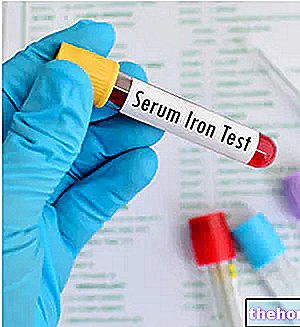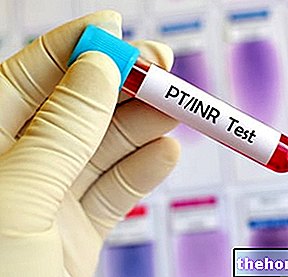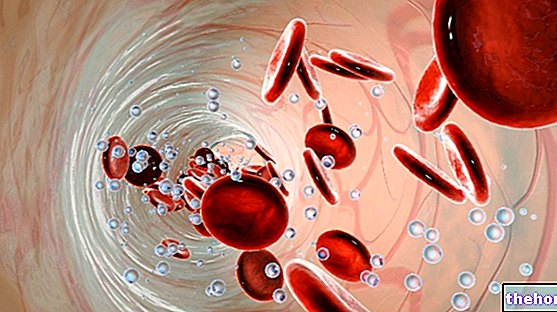What is agranulocytosis
Agranulocytosis is an acute pathological condition that determines a severe reduction of white blood cells circulating in the blood. The result of this alteration determines, in particular, a lack of polymorphonuclear leukocytes (or granulocytes), a particular type of white blood cells that intervene in the defense of the organism.
In the presence of agranulocytosis, the concentration of granulocytes (neutrophils, basophils and eosinophils) drops to levels below 100 cells / mm³ of blood.

At the base of agranulocytosis there may be an "alteration of the medullary myelopoiesis (the bone marrow is unable to produce a sufficient number of granulocytes) or an" increased destruction of these blood cells.
Acquired agranulocytosis most often occurs as a result of drug therapy, while the congenital form is present from birth.
Causes
The pathogenetic mechanisms of agranulocytosis can be determined by:
- Defects in the production of granulocytes;
- Abnormal distribution;
- Reduced survival due to increased destruction (example: hypersplenism) or increased utilization (i.e. from consumption, due to bacterial or viral infections).
Acquired agranulocytosis
Acquired agranulocytosis can be caused by a variety of factors, including:
- Autoimmune diseases;
- Tumors, inflammation, myelofibrosis and other bone marrow diseases;
- Infections;
- Aplastic anemia;
- Some medications or treatments:
- Chemotherapy;
- Bone marrow transplant (or preparation for a bone marrow transplant);
- Drugs such as: rituximab, penicillin, captopril, ranitidine, cimetidine, methimazole and propylthiouracil;
- Cytostatic drugs such as clozapine or nitroxide.
Congenital neutropenia
Sometimes, agranulocytosis is present from birth. This condition can in fact be caused by some rather rare genetic alterations, which can be inherited from parents making it common within the same family.
Risk factors
The following factors increase the likelihood of developing agranulocytosis:
- Chemotherapy treatment for cancer;
- Taking certain medications;
- Infection;
- Exposure to certain chemical toxins or radiation
- Autoimmune diseases;
- Enlargement of the spleen
- Vitamin B12 or folate deficiency
- Leukemia or myelodysplastic syndrome;
- Aplastic anemia or other bone marrow diseases
- Genetic predisposition.
Symptoms
Agranulocytosis can be asymptomatic, or it can present clinically with sudden fever, chills, and sore throat. Infection of any organ (pneumonia, urinary tract or skin infections) can be rapidly progressive and even develop into septicemia. Agranulocytosis is also associated with gum disease.
When suffering from agranulocytosis, the following symptoms may occur:
- Leukopenia (reduction in the number of circulating white blood cells);
- Fever, chills, body aches, weakness or sore throat;
- Bacterial pneumonia;
- Oral ulcers;
- Bleeding of the gums, increased saliva, bad breath and destruction of the periodontal ligament;
- Fungal or bacterial infections.
Diagnosis
Investigations that can help doctors diagnose agranulocytosis may include:
- Complete blood test to determine the granulocyte count
- Urine or other biological samples can be analyzed to determine the presence of infectious agents;
- biopsy or fine needle aspiration of the hematopoietic marrow.
To formally diagnose agranulocytosis, other diseases with a similar presentation, such as myelodysplasia, leukemia and aplastic anemia, must be excluded. The differential diagnosis requires a cytological and histological examination of the bone marrow, which shows an alteration of the promyelocytes, while other types of cells are present in normal values.
In some cases, some more in-depth examinations may be necessary:
- Genetic tests;
- Dosage of anti-granulocyte autoantibodies in people with autoimmune diseases;
Treatment
Treatment of agranulocytosis depends on the cause and severity of the condition. In patients with no symptoms of infection, management consists of close monitoring with serial blood counts and elimination of the factor responsible for the primary disorder (for example, by substituting a particular drug).
Treatment options include:
- Transfusion therapy
If necessary, the patient can undergo granulocyte transfusion. However, white blood cells tend to lose their function rapidly and the therapeutic effect produced is short-lived. In addition, there are many complications associated with this procedure. - Antibiotic treatment
Some antibiotics may be prescribed to eradicate the causative agent of agranulocytosis or to prevent any infections that may be favored by leukopenia. - Injection of G-CSF (stimulating factors)
Depending on the cause, some people may benefit from injections with granulocyte colony-stimulating factor (G-CSF) to stimulate the marrow to produce more white blood cells. In case of agranulocytosis, the administration of recombinant G-CSF (filgrastim) often results in haematological recovery. - Bone marrow transplant
In severe cases of agranulocytosis, a bone marrow (or stem cell) transplant may be necessary.




























